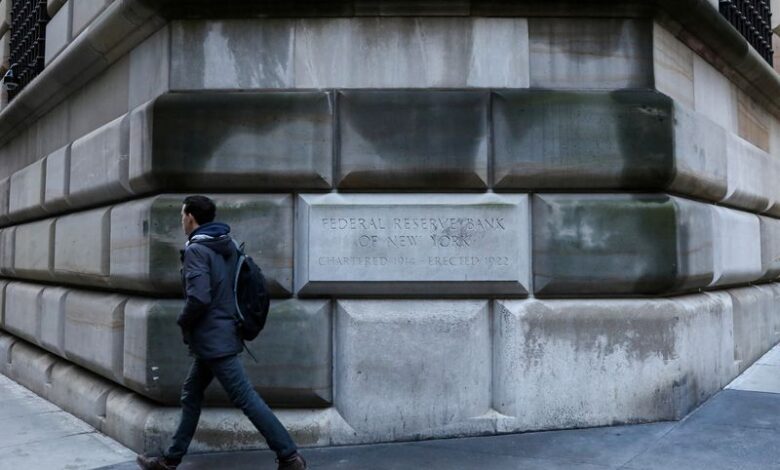NY Fed’s Perli still sees ample money market liquidity

By Michael S. Derby
NEW YORK (Reuters) -Even with some recent bouts of volatility, it appears money market liquidity levels remain robust, a top New York Federal Reserve official said on Tuesday, suggesting the case for the Fed to press on with its balance sheet drawdown can proceed.
While the volatility that struck markets at the end of September is something that argues for central bankers to keep a close eye on markets, even with the churn, “I want to make clear that there is considerable evidence that reserve supply remains abundant – quarter-end pressures do not appear to be induced by a scarcity of reserves,” said Roberto Perli, who manages the implementation of monetary policy at the Federal Reserve Bank of New York, in the text of a speech.
“Although we are monitoring events closely, there are few obvious and foreseeable risks to our continuing to implement monetary policy efficiently and effectively” at the command of the rate setting Federal Open Market Committee, he said.
The Fed has for just over two years been allowing Treasury and mortgage bonds to mature and not be replaced, in a process called quantitative tightening, or QT. That has taken Fed holdings from a peak of $9 trillion to the current $7 trillion mark.
Fed officials have widely argued they have plenty of room to run in shrinking holdings and are closely watching market indicators for signs of money market tightness.
Some in markets have argued that stress seen on the final business day of September, with the end of the third quarter, signals a tightness that could auger an imminent QT end.
Instead, Perli, in his remarks, said quarter-end pressures were contained and usage of the Fed’s Standing Repo Facility was modest historically speaking.
“I, like many market participants, have observed the greater levels of volatility in overnight repo around financial reporting dates like quarter-end,” Perli said, while adding “this slow rise in repo rates has been modest and orderly overall.”
He added the rise in repo rates “is an entirely expected and arguably healthy development – a sign that money markets are normalizing as liquidity declines and as Treasury net issuance continues to grow.”

The QT process aims to take out liquidity added during the coronavirus pandemic and its aftermath, and has been part of a broader normalization of monetary policy. The fate of QT has been in the minds of many observers because the Fed is now in a rate cutting scenario.
The Fed is aiming to leave the financial system with enough liquidity to allow for normal market volatility while affording it firm control over the federal funds rate, its chief lever for achieving its job and inflation goals.



